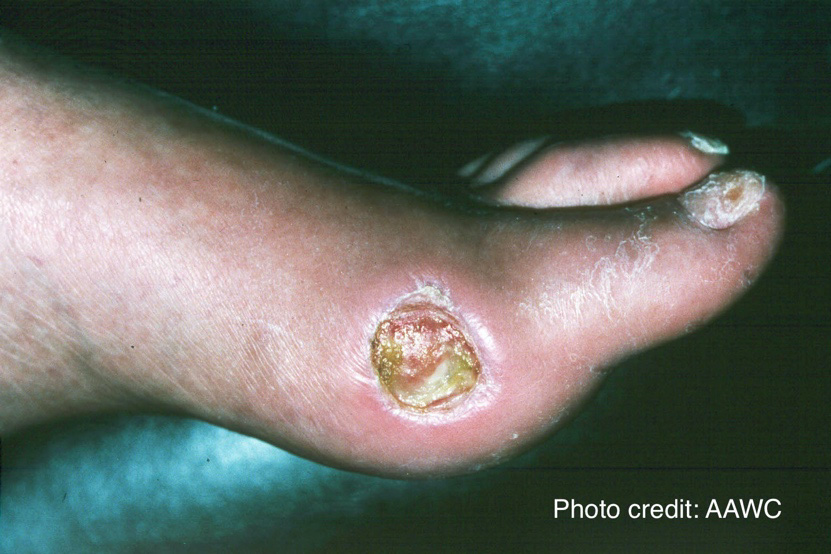What is an Arterial Ulcer?
When there is poor blood perfusion to the lower extremities, the tissue and skin on the lower legs become ischemic—causing an open wound to form. Furthermore, any cuts, scrapes, or minor injuries to the lower legs become difficult to heal because of the lack of blood supply.
Photo credit: AAWC
How do you identify it?
Arterial injuries usually present as a round, even ulceration with well-defined margins with minimal to no drainage. They are usually found on the tips of the toes (or between the toes), on the heels, or lateral ankles. The wound bed varies in color from yellow, to brown, to black, and tend not to bleed as there is little circulation to the extremity. The wound will usually be accompanied by other tell-tale signs of PAD (peripheral arterial disease) —limb cool to touch, no palpable pulse, hairless and shiny skin on the lower legs, and /eg pain at rest or at night.
How do you treat it?
Arterial injuries are difficult to heal as there is little to no blood flow. Increasing circulation and preventing infection are the main goals in treatment. There are various nursing interventions that can be done at the bedside including 1) Management of blood pressure and glucose levels, 2) Encourage smoking cessation, and 2) Protect the legs and feet from ulcer as best as possible. Other than that, surgical revascularization or eventual amputation become a necessary part of treatment.
222 N. Pacific Coast Hwy. Suite 2175 Materials Sourced from: ~ El Segundo, CA 90245 Marriott, R., Gedalia, U., Dhillon, G., Sandoz, C., & Advantage _1e877.878.3289 Frazier, T. (2015). Wound Care Essentials. ASWC. SURGICAL & WOUND CARE info@advantagewoundcare.org Wound Educators. (n.d.).
 Upcoming Courses Learn More & Register Here
Upcoming Courses Learn More & Register Here
